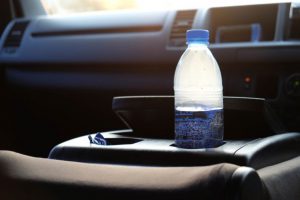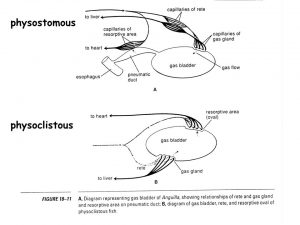Are you heading to East coast or Keys during lobster season? Are you planning on fishing for grouper and snapper more than 3 miles offshore after limiting out on lobster? If the answer is yes both to those questions, then this is the blog for you! If not, this blog is still for you! In Atlantic federal waters as of July 15th, 2020, all commercial, for-hire and recreational vessels are required to have a descending device when fishing or possessing grouper or snapper species . These descending devices are required to be attached to a minimum 16 oz weight and have a minimum of 60 feet of line to lower fish back to depth that may be experiencing signs of barotrauma. But, what’s a descending device? What do they look like? What are they used for? How do you use one? Read more to find out! Read the regulation change from the South Atlantic Fisheries Management Council here.
If you learned anything from this post please let us know here and put some suggestions on what else you want to learn more about, thanks!
Check out this video to see how these descending devices work! This footage was recorded while I was working at the Murie-Parkyn Lab at the University of Florida. It’s up to researchers like these to ensure that there are plenty of fish in the water to be enjoyed for generations to come!
Barotrauma

Most offshore fishermen are familiar with reeling in fish from depth only to see them super bloated, popeyed and floating on the surface if released without any barotrauma mitigation method. How does this happen and why? Barotrauma is an injury(s) caused from rapidly expanding gasses trapped within a fish’s body. The gas, mostly found in the fish’s swim bladder, can displace internal organs and cause bruising, tearing as well as potentially leaving the fish floating on the surface where it can get picked off by a predator or suffocate from lack of water flowing over its gills. There are a series of external symptoms that can occur at different magnitudes based on depth of capture and to a lesser extent, temperature. We have two excellent physics equations to help explain how this phenomenon happens! Read more on release mortality and the effectiveness of venting and descending here.
Equation #1: Boyles Law: P1V1 = P2V2
Science talk: The volume (V) of a gas is inversely proportional to the pressure (P) exerted on the gas assuming a constant (n) temperature (T) and a fixed amount of gas.

Normal talk: In other words, if you were to catch a grouper at 100 ft deep and decrease the surrounding pressure by reeling the fish to the surface, the gas inside the fish’s swim bladder will swell to nearly 4 times in volume! The deeper the fish comes from usually corelates to the severity of trauma. For your own curiosity to roughly determine the amount of expansion you can calculate the volume change yourself! Let’s say the atmospheric pressure at the surface is represented by the fraction 1/1. For every 10 meters of saltwater, 1 atmosphere can be added to the denominator, meaning at 10 meters (33ft) the volume of a gas is 1/(1+1) or 1/2 of volume observed on the surface. Do that math for every atmosphere (10 meters) the fish is captured in and voila, you’re a scientist.
(example: sending a balloon down to 30 meters = 3 atm, [1/(1+3)] or 1/4, the gas would be 1/4th the size it is on the surface when brought to that depth. Reeling up? Flip that fraction upside down 4/1, boom, the gas inside the fish at depth will be 4 times the volume on the surface. That’s a lot of lift!)
Equation #2: Ideal Gas Law: PV=nRT
Science talk: Pressure (P) and volume (V) of a gas is equal to the amount of gas (n) in moles multiplied by the ideal gas constant (R = 8.314) and temperature (T)
Normal talk: In other words, increased temperature will increase pressure or volume of a gas, sometimes both. Fishing wise, let’s focus on the temperature aspect since we covered pressure and volume in the previous equation. When a fish is brought up on a hot deck or touches warmer surface waters, the fish including the gases inside, will start to heat up to the surround temperature. The longer the fish is exposed to these increased temperatures, the more the fish will heat up. In the summer the surface waters can be very warm especially with little wave action causing the water to stratify leaving the top couple feet bathtub warm and hypoxic. A fish suffering from barotrauma floating in this layer is heating up as well as not up taking oxygen from the reduced dissolved oxygen content and since its floating, unable to get new water over its gills. Using a descending device can drop that fish back to a depth with more dissolved oxygen and out of that super warm surface water!

The ideal gas law can be observed in everyday life! When a disposable water bottle is accidentally left in a car, the bottle is often expanded with the plastic rigid from expanded gases. This happens as a result of the car warming up on a hot day, causing some of the water to turn to vapor and the gas pushes outwards on the plastic. Now imagine that pressure and volume change occurring in an internal organ (the swim bladder). The result is trapped gas with expanded volume which equates to more buoyant fish; moreover, since the membranes of the organ are thin, they often rupture when reeled from great depths. A ruptured swim bladder is not a death sentence and studies have found using barotrauma mitigation techniques (venting and descending) greatly increases the rate of survival of released fish!
Fish Biology
fish biology also dictates how severe the symptoms may be. Swim bladders are organs fish use to maintain buoyancy like a scuba buoyancy compensator device (BCD) and in some cases can be used to hear or produce sound (drum fish) or even be used as a lung! There are two types of swim bladders, physostomous and physoclistous. More primitive fish (gar, tarpon etc.) often have a physostomous swim bladder in which there’s a direct connection to the gut and allows fish to gulp air to inflate or burp or fart to deflate the bladder, these fish would not exhibit the typical external symptoms most offshore fisherman are familiar with. The offshore fish (grouper, snapper etc) that exhibit those obvious external signs of barotrauma have physoclistous swim bladders. Those fish inflate their swim bladders through capillary beds, diffusing gas from their blood into their buoyancy organ. This process takes longer because gas has to diffuse back into the blood to shrink that bladder down, leaving them floating on the surface. Often on a hot day, those fish may get eaten or suffocate before successfully being able to off-gas. Fish that utilize more of the water column may not exhibit as severe of symptoms because they are used to going up and down while fish like red grouper have a strong association with the bottom and haven’t evolved to swim up and down.

When to Use Barotrauma Mitigation Gear?
By mandating regulations people tend to be eager to comply and use barotrauma mitigation gear, that’s awesome but at times not needed. Only use these descending gears or venting needles when fish are exhibiting signs of barotrauma. Using a weighted lip clam or venting tool a grouper caught in 10, 20, 30, 40 ft of water will probably do more damage than good. These devices are meant to mitigate barotrauma symptoms that may not allow a fish to return to depth and if the fish can do that under steam, all the better. If the fish isn’t displaying the symptoms, don’t feel obligated to use the gears as getting them in the water as quick as possible will do them better than adding unneeded stress.
What Is Descending Gear?
Descending gear is equipment used to mitigate symptoms of barotrauma observed at the surface when a fish is captured deeper depths. Many fisherman who encounter severe cases of barotrauma often think the fish will not survive however much like a scuba diver effected by the bends, getting that fish to a depth where gases return to manageable volumes can help alleviate the symptoms, and help resume normal behavior. Currently there are a few styles of descending devices but operate using the same premise. Each device has their pros and cons including ease of use, price, size, and what size fish you can effectively descend. For example, you may not be able to use a weight box to descent a Goliath grouper and a lip clamp device may not be large enough to fit around the mouth; so weighted hooks or venting might be the best move to get that fish back down. Also, the larger the fish, the more buoyant it may be so adding some weight or venting may be your best bet. The devices all have one pro that venting does not have, a forced descent that can help revive the fish, bypass some predators and do so without poking holes in the fish’s side. Currently there are only a couple manufacturers making these recompression/descending tools, if finding one at your local tackle is difficult, making your own weighted hook or weighted box could be an option.
Weighted Hooks
Lip Clamp Devices
Weighted Boxes
Venting
Venting fish still works! However, if done incorrectly, can do more harm than good. This method is still a viable form of barotrauma mitigation, check out the video below to learn where to vent. For beginning anglers or with fish that are catatonic on the surface, descending may be the most appropriate/harmless release option.
All in all, good luck and have fun! Fishing is all about enjoying the outdoors and in the process hopefully catching some dinner. Listening to researchers and doing our best to preserve the resource will allow us to keep catching fish and ensure there are enough for the next generation to enjoy!
Tight Lines and Full Lobster Bags!
 0
0
